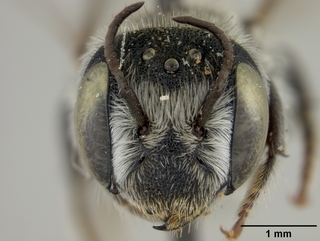
Smithsonian Institution, Entomology Department · 9
Ashmeadiella dimalla, female, face |
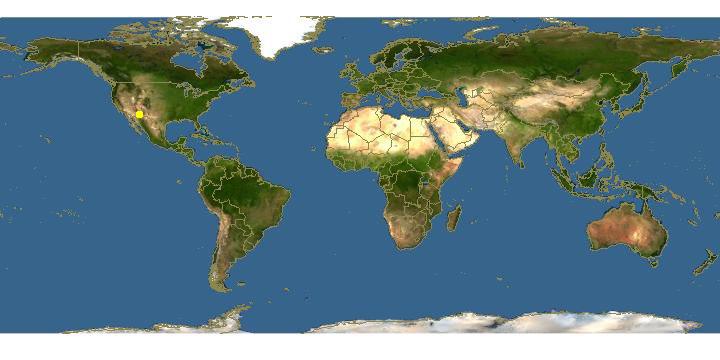
Click on map for details about points.
|
80x5 -
240x3 -
240x4 -
320x1 -
320x2 -
320x3 -
640x1 -
640x2
Set display option above.
Click on
images to enlarge. |
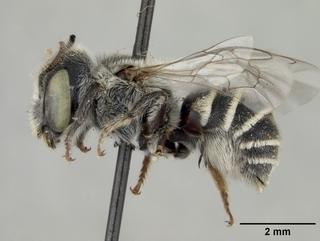
Smithsonian Institution, Entomology Department · 9
Ashmeadiella dimalla, female, side |
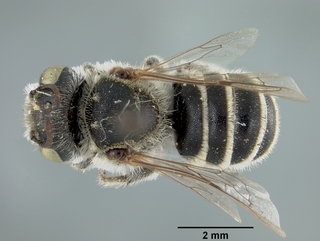
Smithsonian Institution, Entomology Department · 9
Ashmeadiella dimalla, female, top |
|
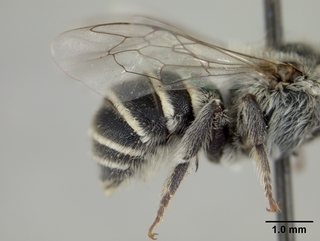
Smithsonian Institution, Entomology Department · 9
Ashmeadiella dimalla, female, wing |
|
Overview |
Species account taken from: "A Revision of the Genus Ashmeadiella (Hymen., Megachilidae) Author(s): Charles D. Michener Source: American Midland Naturalist,Vol. 22, No. 1 (Jul., 1939), pp. 1-84"
This species is black, robust, and rather abundantly pubescent. It differs from related species such as gillettei by the robust form, the strongly concave truncation of the clypeus of the female, and the long median teeth of the sixth tergite of the male.
Female: Inner margins of eyes slightly converging toward clypeus; facial line at least as long as transfacial; under side of flagellum brownish; trunca- tion of clypeus shorter than distance from end of truncation to lateral angle of clypeus; truncation broadly V-shaped emarginate (Fig. 9, P1. 1); clypeus rather coarsely and closely punctate, more finely so anteriorly, anterior margin itself smooth; distance from first to third mandibular tooth distinctly less than width of eye; cheeks narrower than eyes, rather finely punctate; vertex and frons considerably more finely punctate than clypeus, punctures rather close; distance from anterior ocellus to antennal bases slightly more than distance to posterior margin of vertex; distance between posterior ocelli slightly greater than distance to posterior edge of vertex, about equal to distance to eye margin. Scutum with punctation similar to that of vertex, and with pair of small, pubescent spots anteriorly; tegulae dark brown; wings clear; mesepis- terna somewhat more coarsely punctate than scutum; claw segments of tarsi rufescent; inner margins of inner hind tibial spurs finely serrate with over twenty small teeth, outer margin with eleven rather long teeth; outer spurs with about eight and ten oblique teeth on inner and outer margins respectively. Punctures of abdomen relatively close, nearly as large as those of scutum on dorsum of anterior tergites, larger than those of scutum posteriorly and later- ally; tergites one to five with distinct apical bands of white pubescence; scopa white. Length nearly 7 mm.
Male: Similar to female. Inner margins of eyes slightly converging toward clypeus except for lower ends which diverge; clypeus more coarsely punctate than vertex, except anteriorly where punctures are fine; anterior margin of clypeus with broad, weak concavity, narrower than basal width of clypeus; face, except center of clypeus, largely covered with white pubescence; upper part of cheeks more coarsely punctate than vertex and frons, which are quite finely and closely punctate; distance between posterior ocelli slightly greater than distance from one of them to nearest eye margin or to posterior edge of vertex; outer teeth of sixth tergite subacute; median teeth elongate, nearly twice as long as basal width, slender and subparallel sided apically, somewhat broadened basally, concavity between them distinctly longer than semicircle. Length 8 mm. (abdomen straightened).
Holotype female and allotype male: Flagstaff, Arizona, June 10 and 11, 1909, on flowers of Iris (F. C. Pratt, U.S.N.M.).
|
|
|
Names | |
|
|
| Supported by | |
Updated: 2024-04-29 08:12:44 gmt
|